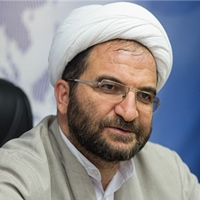The Practical Potentials of Rapprochement between Shia and Sunni Sufis of Pakistan, Especially Brillouin
Author(s):
Article Type:
Research/Original Article (دارای رتبه معتبر)
Abstract:
Extremism and violence are among the serious harms that cause rifts between Islamic countries, and in addition to making coexistence difficult, they also destroy economic and cultural resources. In the meantime, Pakistan, the second most populous Islamic country with a history of five thousand years of civilizational interaction with Iran, has been plagued by religious division for a long time, an issue that has negatively affected its productive relations with its western neighbor, Iran. Considering the tendencies and characteristics of Iranian Shiism and Sufi Sunniism in Pakistan, it seems that one of the ways of approximation and unity is to pay more attention to similar and common beliefs and traditions in the region, especially the centrality of Ahl al-Bayt (AS), the issue that can be seen among both Shiites and Sufis of these regions. The emphasis of the Sufi dynasties on relating their cloak to people from Ahl al-Bayt (AS), resorting to them, visiting the graves of Sadat and divine saints, etc., shows the great capacity of love of Ahl al-Bayt to bring together all sects. Brillouin is the main Sufi community of Pakistan, which has special capacities to connect with Shiism. This article examines the strategies of utilizing the capacity of love for Ahl al-Bayt (AS); their Sufi tendencies; the anti- Excommunication and anti-Wahhabi approach; and the diplomatic, scientific, scholastic, and religious capacity of Brillouins along with the practical solutions for its realization, which is the result of close field interactions and observations with the society.
Keywords:
Ahl al-Bayt (AS) , approximation , Sufism , Shiism , Brillouin , Pakistan
Language:
Persian
Published:
Pajouheshname - ye - Mazaheb - e - Eslami, Volume:9 Issue: 18, 2023
Pages:
233 to 263
https://www.magiran.com/p2556714
سامانه نویسندگان
مقالات دیگری از این نویسنده (گان)
-
The How of the Proximity of the First Generation of Sufis to the Infallible Imams (a) Based on Sources on the Study of Hadith Narrators (Rijāl) and Hadith (Case Study: Sufyān al-Thawrī (d. 161 AH))
Mahdi Montazeri *, Hosain Abbasi,
A Research Biannual Religious Anthropology, -
A Typology of Traditional Islam in terms of Constant and Variable Elements of Religion
Seyed Ali Bathaei *, Mehdi Farmanian, Ebrahim Qasemi
Pajouheshname - ye - Mazaheb - e - Eslami, -
A critical rereading of Tabatabai's Madrasi point of view regarding the place of debate in the first centuries of Imamia
Mogtba Moradimaki *, Safdar Rajabzadeh, Mehdi Farmanian
Journal of Kalam Pajouhi, -
The belief capacity of Sunni Sufis of Pakistan in order to increase the soft power of the Islamic revolution (examined example: Mohabbate Ahl al-Bayt, peace be upon them)
Mohamad Behzad *, Abdolvahed Bameri
Journal of Subcontinent Researches,




